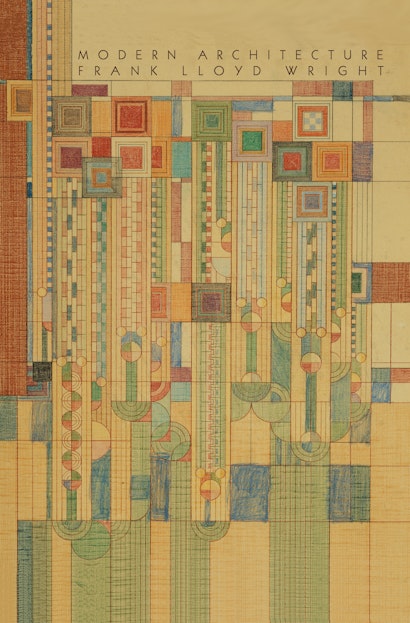Modern Architecture: Being the Kahn Lectures for 1930


Hardcover
ebook (EPUB via app)
- Sale Price:
- $20.97/ÂŁ17.50
- Price:
-
$29.95/ÂŁ25.00 - ISBN:
- Published:
- Jul 13, 2021
- Copyright:
- 2008
- 7 halftones.
30% off with code PUP30
ebook (PDF via app)
-
Audio and ebooks (EPUB and PDF) purchased from this site must be accessed on the
91ĚŇÉ« app. After purchasing, you will receive an email with
instructions to access your purchase.
About audio and ebooks - Request Exam Copy
Modern Architecture is a landmark text—the first book in which America’s greatest architect put forth the principles of a fundamentally new, organic architecture that would reject the trappings of historical styles while avoiding the geometric abstraction of the machine aesthetic advocated by contemporary European modernists. One of the most important documents in the development of modern architecture and the career of Frank Lloyd Wright, Modern Architecture is a provocative and profound polemic against America’s architectural eclecticism, commercial skyscrapers, and misguided urban planning. The book is also a work of savvy self-promotion, in which Wright not only advanced his own concept of an organic architecture but also framed it as having anticipated by decades—and bettered—what he saw as the reductive modernism of his European counterparts. Based on the 1931 original, for which Wright supplied the cover illustration, this beautiful edition includes a new introduction that puts Modern Architecture in its broader architectural, historical, and intellectual context for the first time.
The subjects of these lively lectures—from “Machinery, Materials and Men” to “The Tyranny of the Skyscraper” and “The City”—move from a general statement of the conditions of modern culture to particular applications in the fields of architecture and urbanism at ever broadening scales. Wright’s vision in Modern Architecture is ultimately to equate the truly modern with romanticism, imagination, beauty, and nature—all of which he connects with an underlying sense of American democratic freedom and individualism.